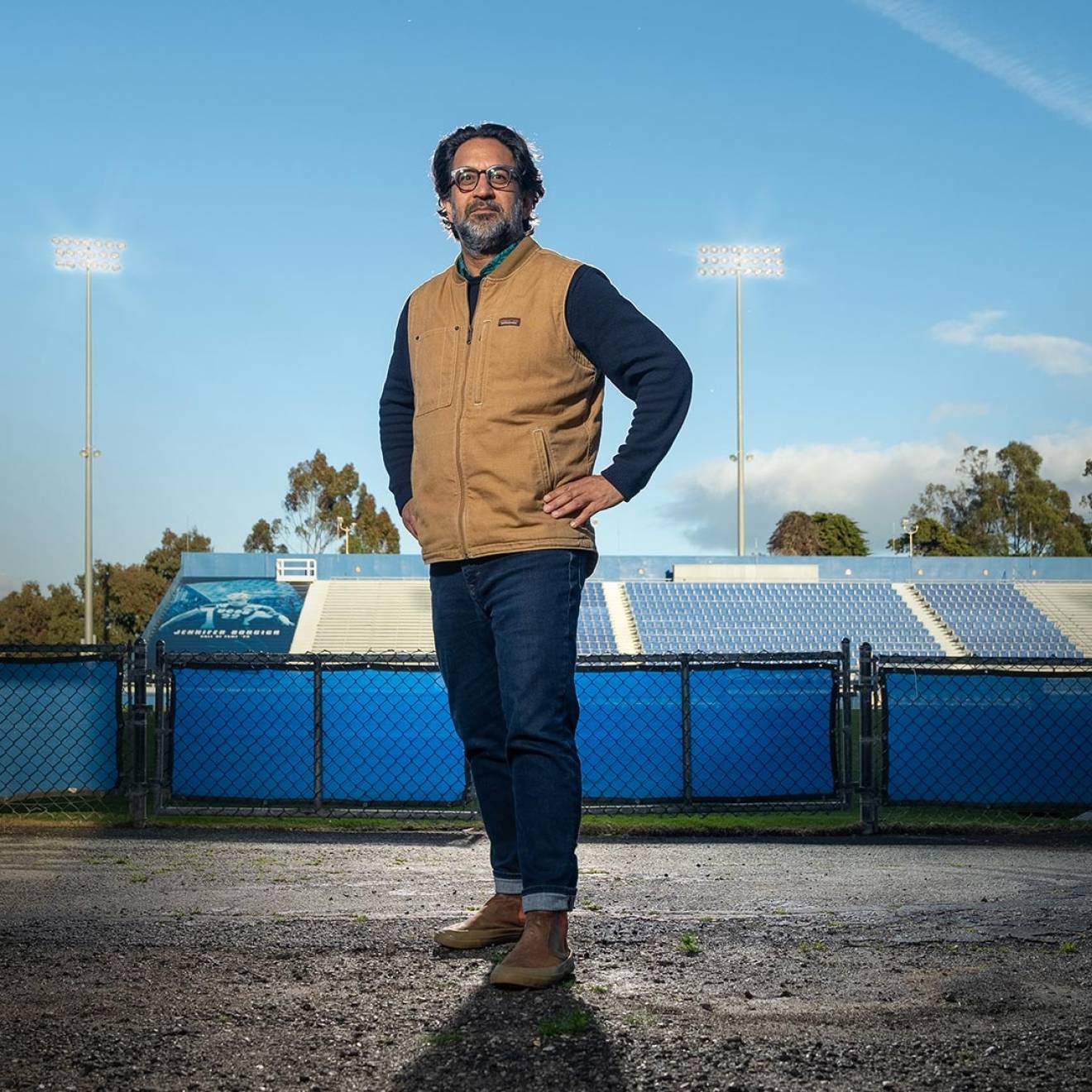This is a Halloween story about a haunting. And not just in the modest suburban home in Culver City that became the epicenter of a UCLA investigation into violent poltergeist activity. This story is about how the investigators themselves are still haunted by the events of that summer and fall 50 years ago, in 1974.
In the 1970s, many universities gave space to serious people seeking scientific evidence of life after death, telepathy and psychokinesis. Between 1966 and 1978, Thelma Moss M.A. ’64, Ph.D. ’66, a former actress, scriptwriter and champion of psychedelics, taught psychology at UCLA. During that time, she also ran a largely unsanctioned and unfunded laboratory on the fifth floor of the UCLA Neuropsychiatric Institute (now the Semel Institute for Neuroscience and Human Behavior).
“The parapsychology laboratory was small and cramped — just desks, phones and an isolation-tank–like dark room — but it was always madly busy,” recalls Barry Taff, who alongside another Moss disciple, Kerry Gaynor, became one of Moss’ field investigators.
Celebrities were fascinated by their work — comedian Carol Burnett wrote in her biography that Moss helped her create photographic images with her mind; author William Peter Blatty and director William Friedkin visited the lab while working on The Exorcist, the 1973 film that ushered in a generation of supernatural movies. Other visitors shunned the limelight: Taff says members of the intelligence community visited to scrutinize their work on “remote viewing” — interviewing people who claimed they could see places or events thousands of miles away, as a “picture” in their minds. The visitors came via the U.S. Army’s Stargate Project, which studied psychic phenomena for military purposes.
One of the lab’s most famous “cases” began with a chance meeting in a bookstore: In August 1974, Taff and Gaynor were approached by a woman named Doris Bither, who told them she was being attacked by supernatural entities in her Culver City home.
“We went to see her at home with our 16-page questionnaire, but she refused to share key details — not even her age,” Taff says. “It was clear Doris was deeply unhappy, and maybe we would not have returned after a second visit when, without warning, a frying pan flew out from a cupboard at us.” The team tore the kitchen cabinet apart, suspicious that there were tricks involved. But they found nothing that could explain what had happened.
The flying frying pan “was only the first of many projectiles, cold spots and floating luminous green lights that we witnessed over the 10 weeks we spent in the house,” Taff says. “We arrived with scientific instruments, cameras and such, trying to collect evidence this was real, but it was elusive. Things rarely happen when you are waiting for them. After 50 years, I can say one thing — this was the real deal. It shook me, then and now, and I still think about it a lot.”
Earlier this year, Gaynor, now a hypnotherapist whose client list includes actors Martin Sheen and Aaron Eckhart, appeared on the Netflix talk show John Mulaney Presents: Everybody’s in L.A. and recalled the encounters. He revealed that when Bither’s oldest son put on a record by British rock band Black Sabbath, the teenager’s baseball cards flew around the room. Gaynor came to feel that it was Doris Bither who was the source of the energy, not the house, since the paranormal activity followed her when she moved out of the home. As they have with Taff, memories of the Bither case have stayed with Gaynor throughout the years.
The skeptics have not been kind. Many have accused the investigators of confirmation bias and of failing to produce verifiable evidence. Taff, who spent several days on the set of the 1982 Barbara Hershey film The Entity, loosely based on the Bither story, says the majority of the 4,800 cases he has investigated were caused by unusual but conventional phenomena. But a few, like the Culver City case — in which he says Bither acted as an energy generator, or poltergeist — remain mysterious.
“It is very difficult to examine such happenings in a lab,” he says. “But we were developing the tools and protocols to do so.” The lab closed in 1978. There will always be things, Taff says, that are destined to remain inexplicable.


